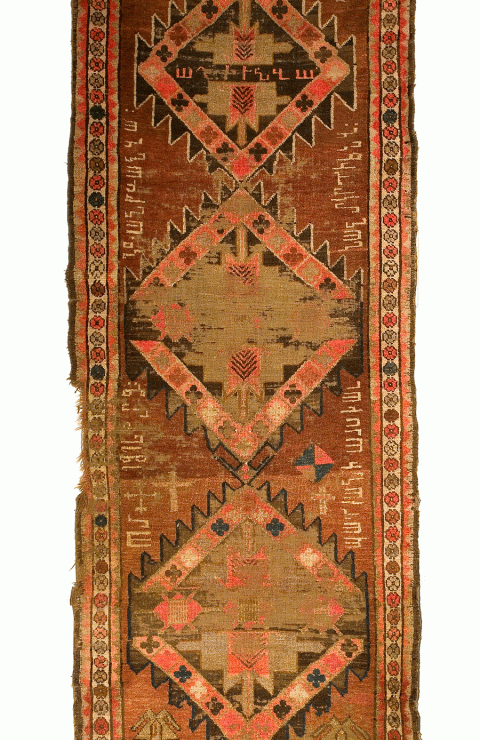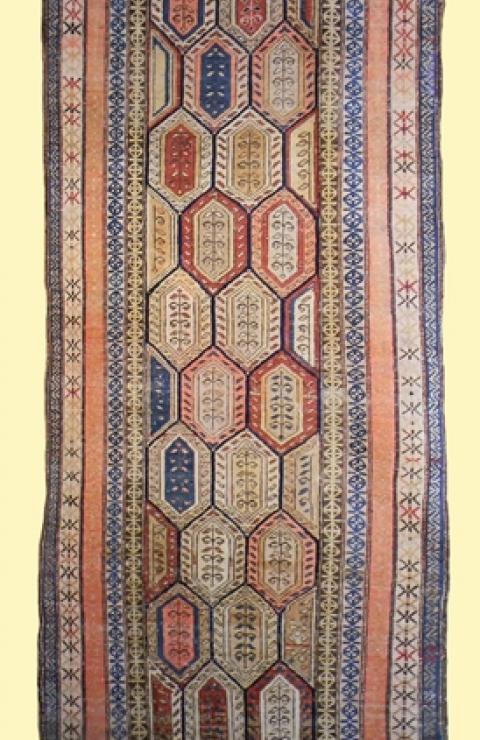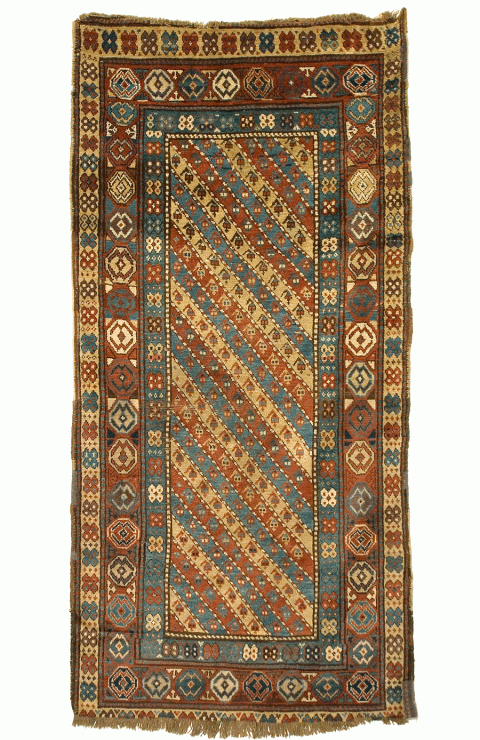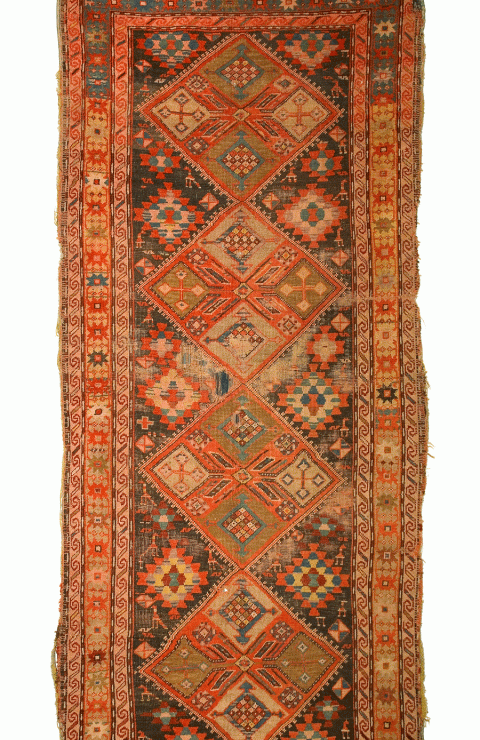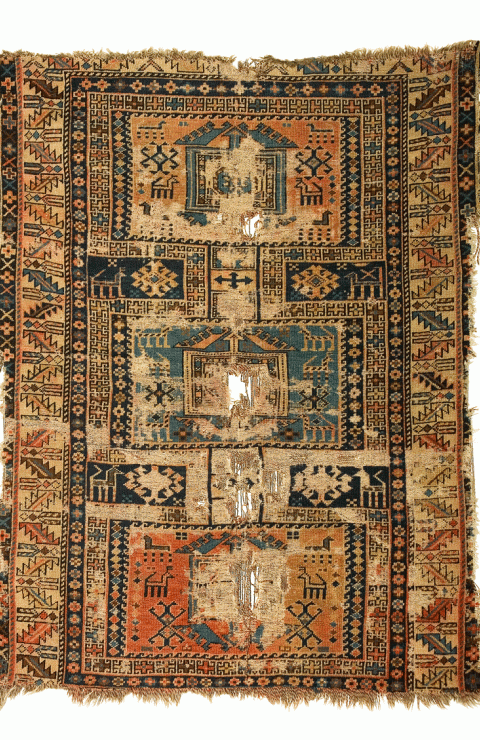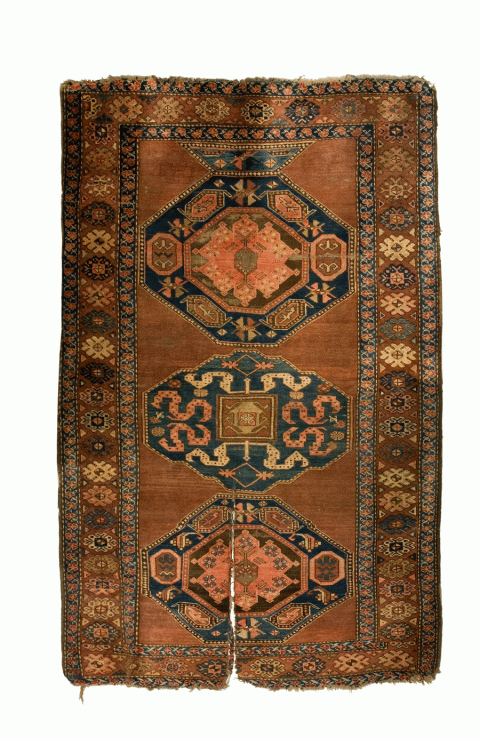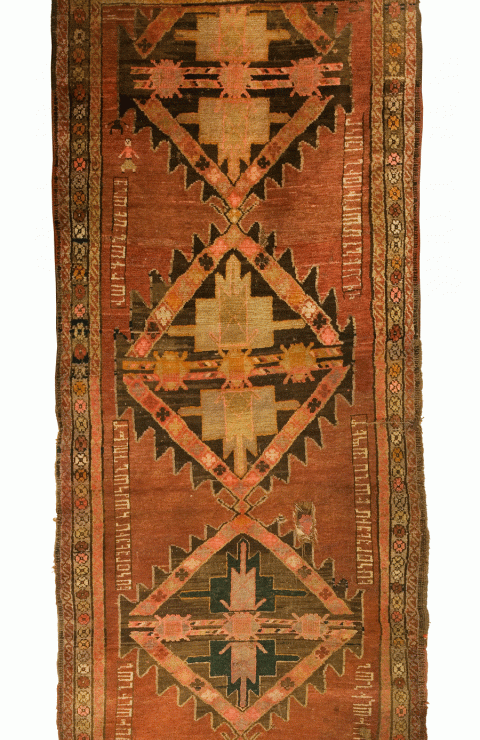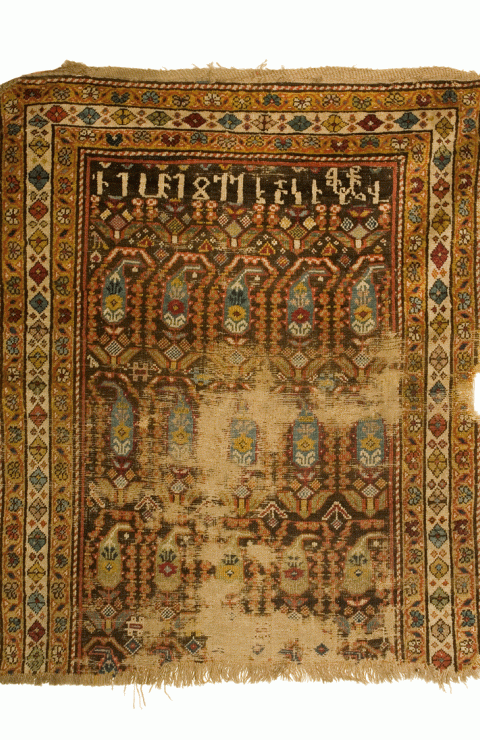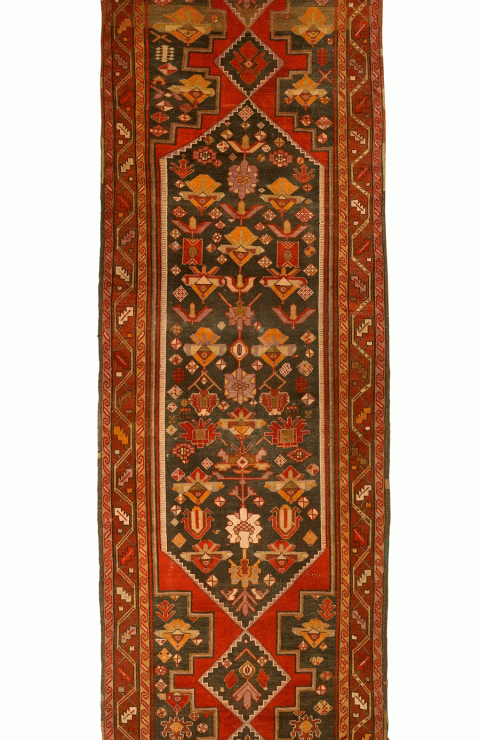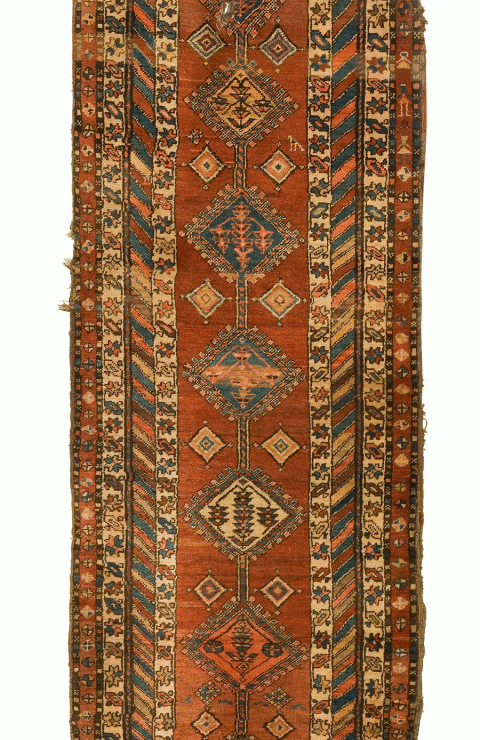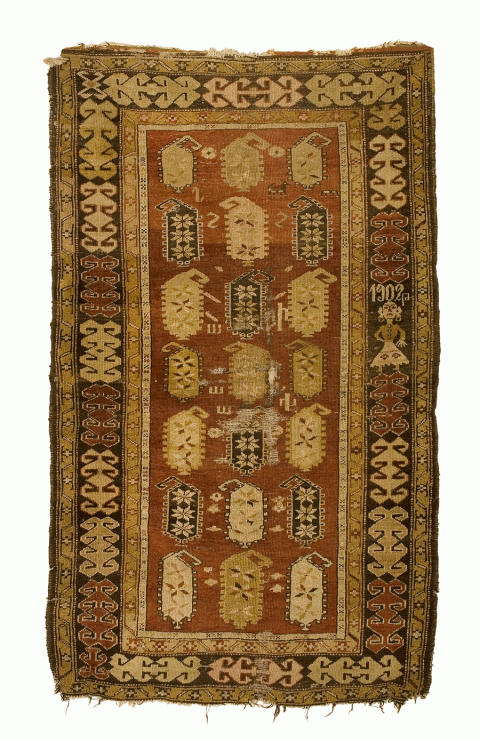Rug is an important part of the Armenian folk art. In Armenia it was known from 4-3 centuries B.C. The evidence of this fact are tools, instruments, fragments of textile, remnants of raw material, articles of rug weaving culture from different regions of Armenia. Carpet weaving developed in Middle Ages, especially under Bagratuni and Arabic reign. Armenian rugs of that period were widely spread all over the world. Armenian and foreign historians (8-12cc) testified the fact of high artistic and technical value of Armenian rugs and carpets. More than 10 samples of rugs from Middle Ages give an idea of their origin. Among them are rugs “Yerakhoran’’-1202, and “Goohar’’-1680, with Armenian inscription, “Dragon’’ rugs dated to 15-18 centuries. Besides the usual name different nations call them “carpet’’ from the Armenian word to tie, that prompts about the Armenian origin of this art.
The Armenians call this type of textile “khali’’, also “bazmakan”. It is obvious that the Armenians call the piles type “carpet”. The Armenian rug weaving has wide geography. It is classified according to historical-ethnographical regions. The rugs from Vaspurakan, Syunic, Artsakh, Gugark, and Bardzr Hayk are distinguished by their designs, ornaments, color and composition.
In common, for the Armenian rugs geometric, zoomorphic, plant ornaments are very peculiar. They are represented in stylized forms, symbolizing the way of national and informational mentality. The Armenian inscriptions are often met on the rugs (occasion and the name of the weaver).
The rugs and carpets are used on different occasions. They were used as bed and table covers, curtains; they were spread on the floors, hung on the walls.
Rug was the symbol of wealth; it was the part of a young lady’s dowry together with carpets, salt sacks and bag for bed-clothes.

